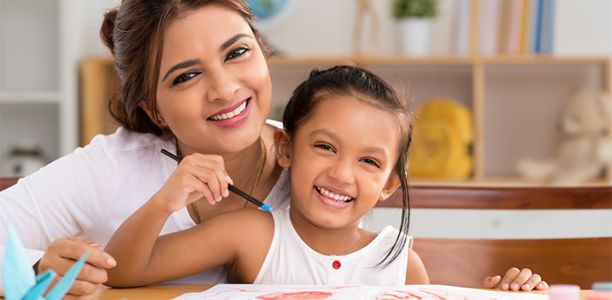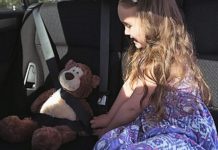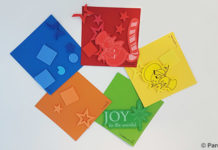Age
For 2 to 5 year olds.
Duration of activity
This activity can last for 15 minutes or longer.
Materials/equipment
- Big or small printable worksheets
- Either a pencil/texta(felt tip pen) or some small stickers (coloured dots or stars)
Cost
The cost of this activity should be minimal as most of these materials you would already have at home.
Preparation
- Print out the complete big or small template.
What to do
- For these activities, you can use either a pencil or felt tip pen (a younger child may find a bright thick texta pen easier to hold and mark the page with) to mark the smallest and largest objects. Alternatively, you can use little coloured dot stickers or stars and ask the child to put e.g. a red sticker next to the smallest and a blue sticker next to the biggest.
- The first activity is choosing the biggest and smallest ball on the page.
- The second activity is choosing the longest and shortest sausage dog on the page. Talk to your child about how long and short are different to big and small. Something can be big and short or big and long etc.
- The third activity requires the child to count the train carriages to work out which train is the longest and which is the shortest. Discuss the concept of zero (having no carriages).
- The fourth activity requires the child to look at a series of objects which are the same size on the page and decide which object is the largest and which is the smallest in real life.
- The fifth activity follows the same method but as the fourth activity but uses harder objects.
Extension activities
- As you do this activity with your child, talk about each object. For example, with the balls you may want to discuss the colours, which sport each ball is used for etc.
- Use this as an opportunity to practice counting – count the objects on each page and write the number.
- Ask them about their preferences for the object in each activity.
- If you speak a second language with your child, complete the activity in another language.
- For older children, ask them to order the objects by size, eg 1st, 2nd, 3rd largest or longest.
- Pick and choose which of the activities you do based on your child’s age and abilities, young children may only be able to do the first couple and may enjoy repeating this several times, whereas older children may skip straight to the harder activities at the end.
Educational outcomes
Language skills
 As you work on this activity with your child you will be developing their language and literacy skills. Mathematical vocabulary, for example words to describe concepts like measurement and pattern will develop while you’re discussing similarities and differences in the objects on each page, for example the patterns, colours, shape and size of the objects. Most children develop a basic mathematical vocabulary (they know words to describe concepts like size and colour) between 18-36 months. Talking with your child throughout the activity will also help develop their general vocabulary and teach them new words used to describe objects they see around them, and practice pronouncing these.
As you work on this activity with your child you will be developing their language and literacy skills. Mathematical vocabulary, for example words to describe concepts like measurement and pattern will develop while you’re discussing similarities and differences in the objects on each page, for example the patterns, colours, shape and size of the objects. Most children develop a basic mathematical vocabulary (they know words to describe concepts like size and colour) between 18-36 months. Talking with your child throughout the activity will also help develop their general vocabulary and teach them new words used to describe objects they see around them, and practice pronouncing these.
Mathematics skills
This activity will help to develop a range of mathematical skills which will set the foundation for your child’s later mathematical understanding. What your child learns will depend on their age. Toddlers for example:
- Can learn to identify the correct number of objects, for example by recognising that there are two carriages on a train (however they might not yet be old enough to recognise a larger set, of four or five objects);
- Can differentiate between and use mathematical language to describe big and small (but usually don’t yet know the difference between short and long).
The mathematical learning for pre-schoolers will involve them:
- Comparing and discussing the differences in objects on the page which will help develop their mathematical language, including concepts like longer and shorter, bigger and smaller. Older pre-schoolers may be able to use more specific concepts, for example instead of identifying the biggest and smallest objects they may be able to order all objects (1st, 2nd, 3rd etc.) according to their size or length;
- Using mathematical language to describe big and small but also more complex measurement concepts like length (short and long)- children generally understand the meaning of short and long at about three years old;
- Counting groups of objects on the page to develop their counting skills;
- Exploring mathematical language to describe the position of objects on the page, for example identifying that the biggest ball is above the smallest ball.
Social and communication skills
Young children develop socially and emotionally from discussing things with their parents. For example toddlers learn how to respond to questions, while discussions help pre-schoolers master the art of putting words together to form sentences and give more complex answers to questions. Children also practice taking turns at speaking and asking questions about things that make them curious.
Fine motor skills
Whether you stick stickers or draw marks next to the big and small objects, your child will be developing the fine muscles that control their fingers. These muscles are used for writing, grasping objects and just about everything else the fingers do.
Problem solving skills
As your child works through this activity they will be solving a problem (how to identify, for example the biggest or longest object) and developing the reasoning skills to solve similar problems in the future. By about four years of age most children are able to sort and classify objects based on similarities and differences, and use appropriate language to describe their choices. Younger children may ask for your help to solve the problem and knowing when to ask for help is an important problem solving skill.
Download the worksheet for this activity
References
- Virginia Early Childhood Development Alignment Program. Milestones of child development- A guide to young children’s learning and development from birth to kindergarten. 2009. (cited 2 September 2013). Available from (URL link)
- Queensland Health. Physical and cognitive milestones. 2007. (cited 2 September 2013). Available from: (URL Link)



 (12 votes, average: 4.58 out of 5)
(12 votes, average: 4.58 out of 5) 






